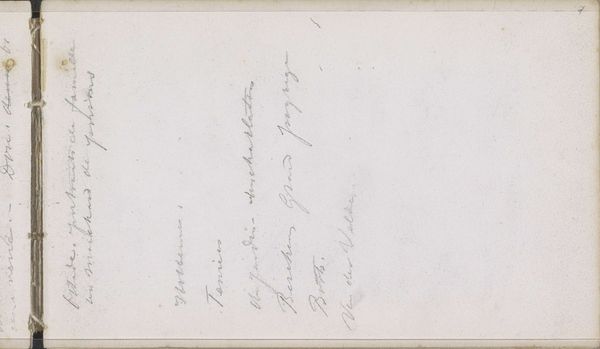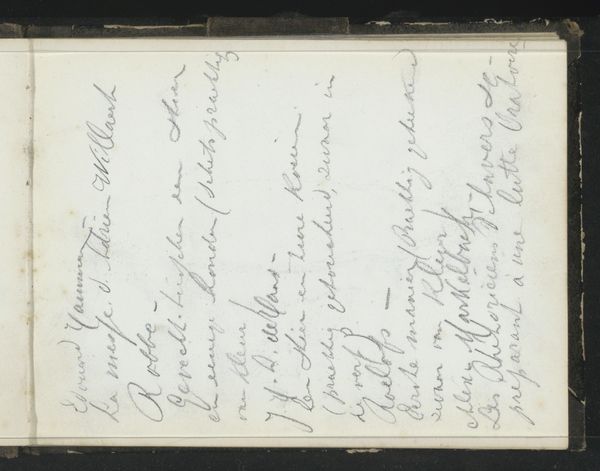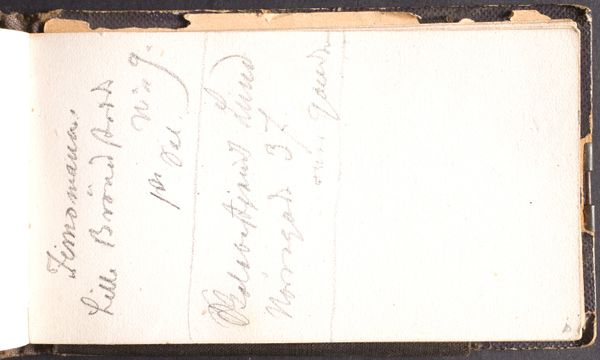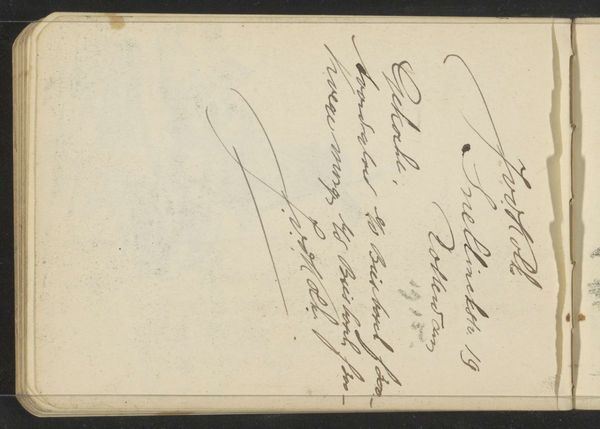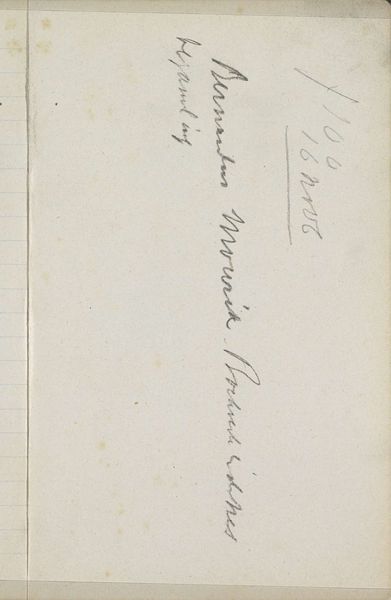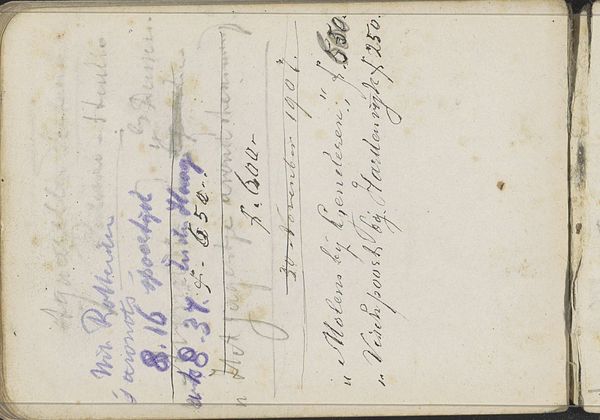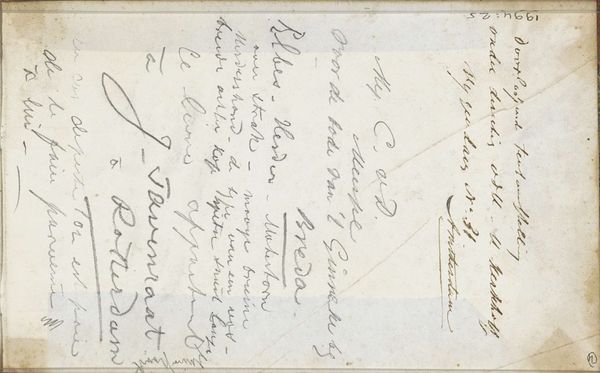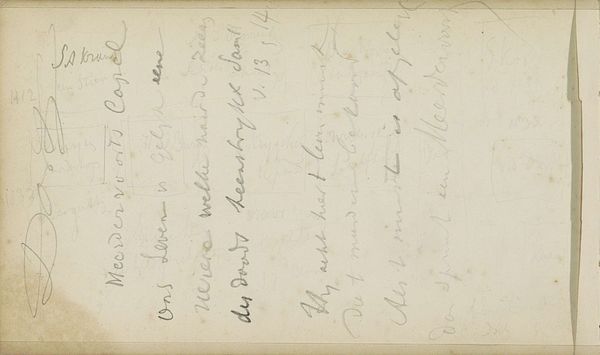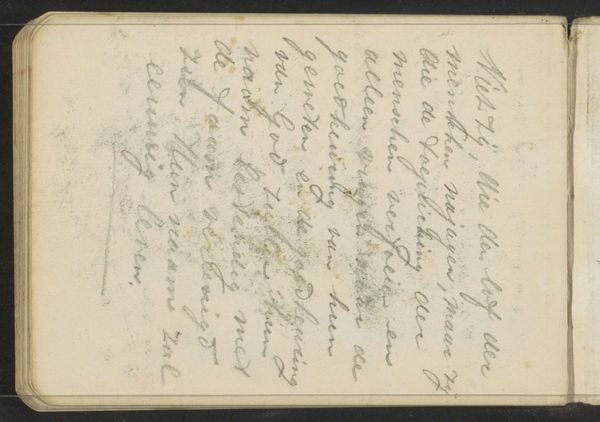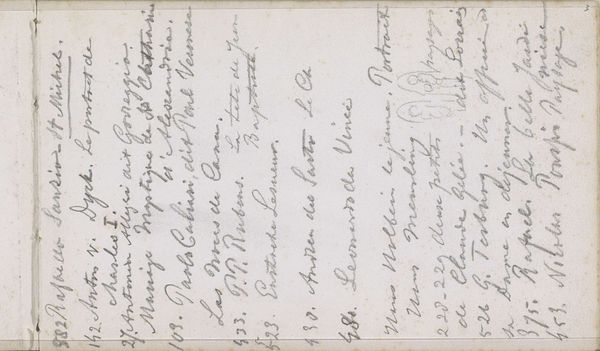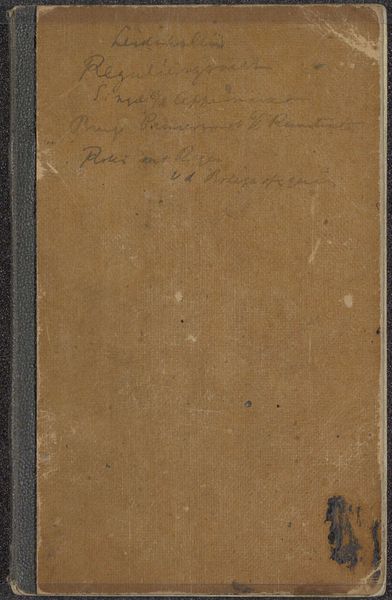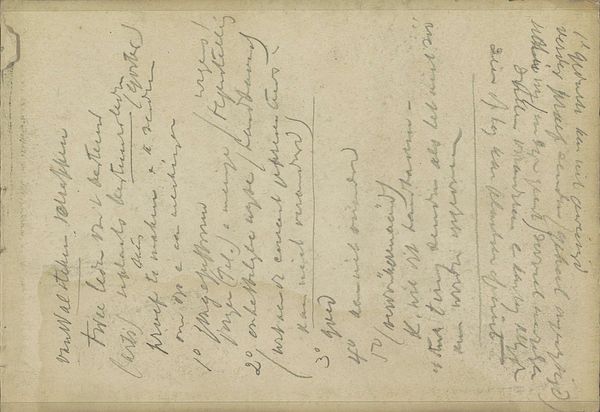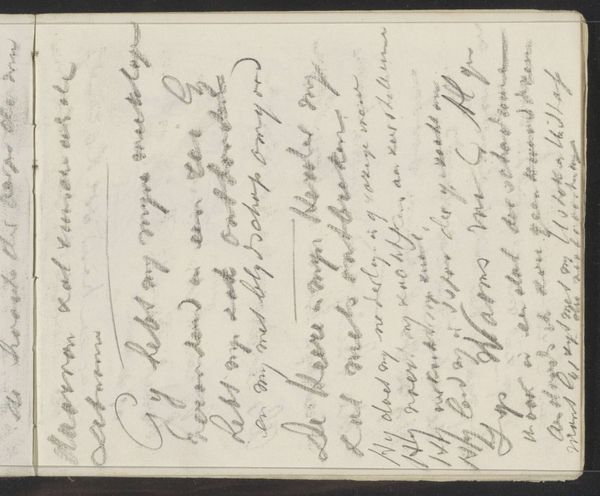
drawing, paper, pencil
#
portrait
#
drawing
#
aged paper
#
homemade paper
#
dutch-golden-age
#
sketch book
#
hand drawn type
#
paper
#
personal sketchbook
#
hand-drawn typeface
#
fading type
#
pencil
#
thick font
#
sketchbook drawing
#
academic-art
#
sketchbook art
#
realism
Copyright: Rijks Museum: Open Domain
Curator: Standing before "Annotaties" from around 1860-1866 by Cornelis Springer, now residing here at the Rijksmuseum, one immediately notes its quiet intimacy. It’s a pencil drawing on paper. What’s your first impression? Editor: It feels incredibly fragile. Like a whispered secret on fading parchment. I'm drawn to the raw texture of the homemade paper, the pencil smudges. It whispers stories of process. Curator: Indeed, that raw quality is precisely what captures my imagination. The paper is aged; those annotations almost spectral. Imagine Springer pausing on a busy street, whipping out his personal sketchbook to record the scene’s essence and quickly scribbling down addresses or notes! Editor: Absolutely. Think about what that paper represents—the cost, the labour to produce it. These weren't casual doodles, this was an investment. Even a simple drawing contains layers of economic and social information, if you look closely at the medium itself. The act of manually drafting hand-drawn type hints at a pre-digital reality where typography itself involved meticulous work and craft. Curator: It's more than just simple observation, I think. These aren’t perfect renditions. It captures something of the elusive truth that lies beneath our superficial perceptions of daily life. It's deeply emotive and atmospheric, despite the mundane subject matter. Editor: I agree that it holds emotive weight. Yet, seeing it as "mundane" seems to miss the crucial point. The ordinary holds extraordinary potential precisely because its ubiquity renders it virtually invisible. The drawing’s details, I bet, offered the possibility of transforming urban space by allowing for better accounting or planning in ways we could only begin to guess at! Curator: I adore your viewpoint, contextualizing everything through that materialist lens. It highlights how even the simplest artwork reflects so much about that society and its inner workings. Editor: Exactly. Looking at how the most fundamental parts—the very materials and making—shape artistic output. You’ve given me something fresh to contemplate today! Curator: Likewise! It always deepens my understanding to see how technique serves as the bedrock of something emotionally and culturally powerful.
Comments
No comments
Be the first to comment and join the conversation on the ultimate creative platform.
